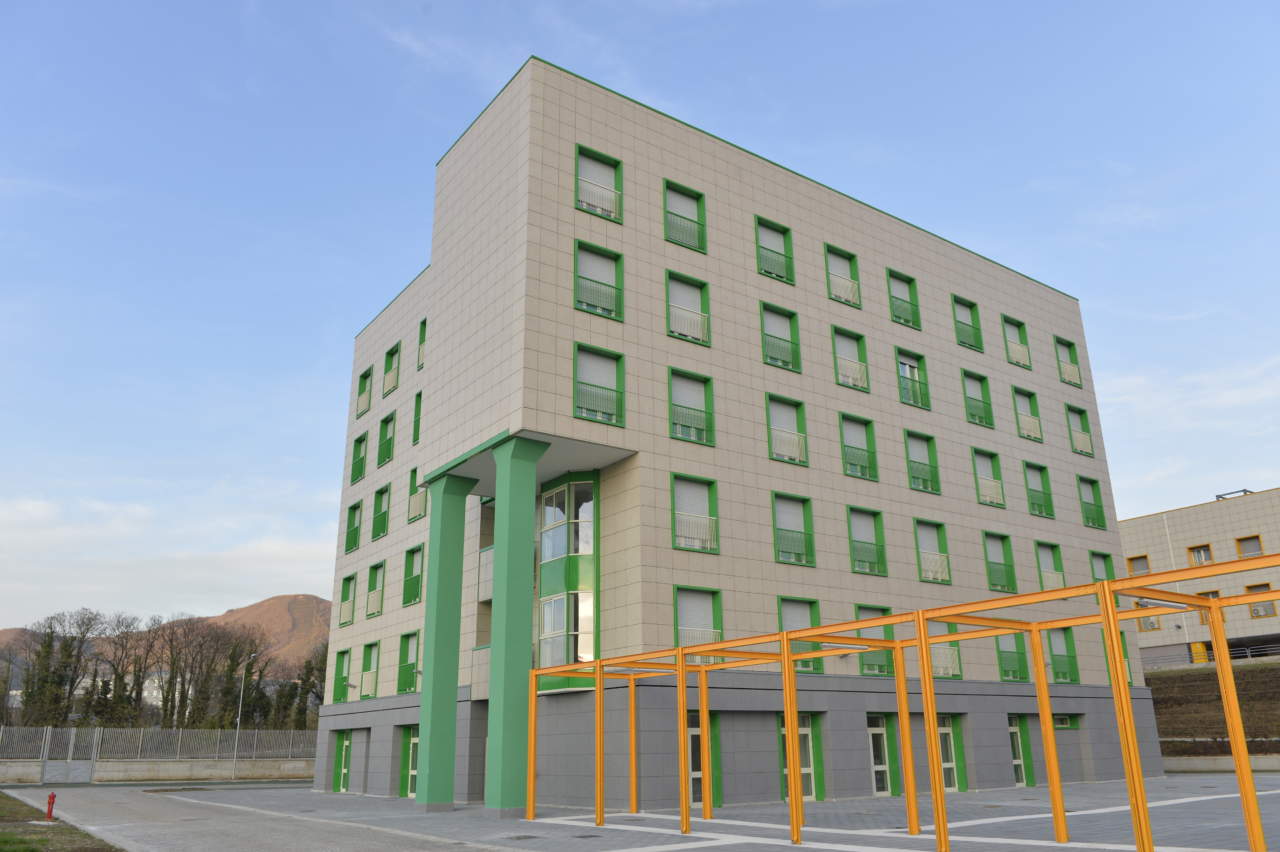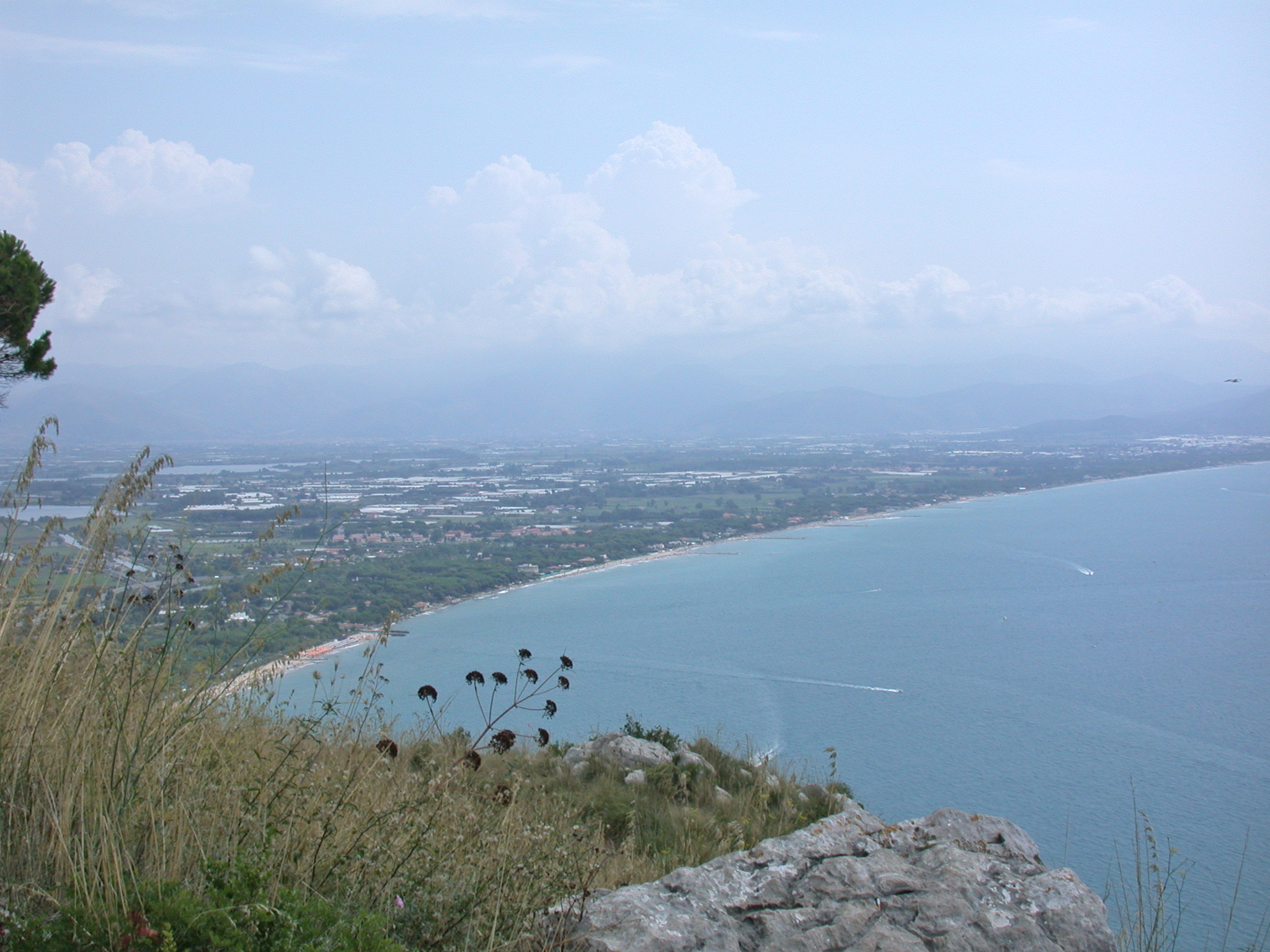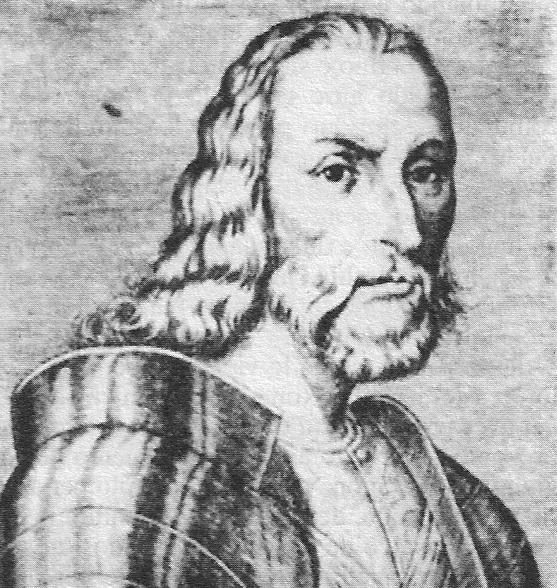|
Paul Burali D'Arezzo
Paolo Burali d'Arezzo (1511 – 17 June 1578) was an Italian priest of the Theatine Order, a bishop, and cardinal of the Roman Catholic Church. His legal skills made him a prominent figure in the law courts of Naples, and then in the councils of government as a defender of the rights of citizens. He abandoned his career to pursue a calling to the religious state, where he became a leader in the Theatine Order. Pope Pius V elevated him to the cardinalate in 1570. He was considered as a candidate for the Papacy in 1572, but his stern character did not recommend him to the electors. The new Pope, Gregory XIII, then promoted him to be the Archbishop of Naples, where he served from 1576 to 1578. After his death he was recognized as beatified and worthy of official recognition by the Church. Biography Early life Born in Itri, south of Rome, near Gaeta, in 1511, with the baptismal name of Scipione Burali d’Arezzo, he was the second son of Paolo Burali d’Arezzo and his wife Vi ... [...More Info...] [...Related Items...] OR: [Wikipedia] [Google] [Baidu] |
Cardinal (Catholicism)
A cardinal ( la, Sanctae Romanae Ecclesiae cardinalis, literally 'cardinal of the Holy Roman Church') is a senior member of the clergy of the Catholic Church. Cardinals are created by the ruling pope and typically hold the title for life. Collectively, they constitute the College of Cardinals. Their most solemn responsibility is to elect a new pope in a conclave, almost always from among themselves (with a few historical exceptions), when the Holy See is vacant. During the period between a pope's death or resignation and the election of his successor, the day-to-day governance of the Holy See is in the hands of the College of Cardinals. The right to participate in a conclave is limited to cardinals who have not reached the age of 80 years by the day the vacancy occurs. In addition, cardinals collectively participate in papal consistories (which generally take place annually), in which matters of importance to the Church are considered and new cardinals may be created. Cardina ... [...More Info...] [...Related Items...] OR: [Wikipedia] [Google] [Baidu] |
Crucifix
A crucifix (from Latin ''cruci fixus'' meaning "(one) fixed to a cross") is a cross with an image of Jesus on it, as distinct from a bare cross. The representation of Jesus himself on the cross is referred to in English as the ''corpus'' (Latin for "body"). The crucifix is a principal symbol for many groups of Christians, and one of the most common forms of the Crucifixion in the arts. It is especially important in the Roman Rite of the Roman Catholic Church, but is also used in the Eastern Orthodox Church, most Oriental Orthodox Churches (except the Armenian & Syriac Church), and the Eastern Catholic Churches, as well as by the Lutheran, Moravian and Anglican Churches. The symbol is less common in churches of other Protestant denominations, and in the Assyrian Church of the East and Armenian Apostolic Church, which prefer to use a cross without the figure of Jesus (the ''corpus''). The crucifix emphasizes Jesus' sacrifice—his death by crucifixion, which Christians beli ... [...More Info...] [...Related Items...] OR: [Wikipedia] [Google] [Baidu] |
University Of Salerno
The University of Salerno ( it, Università degli Studi di Salerno, UNISA) is a university located in Fisciano and in Baronissi, Italy. Its main campus is located in Fisciano while the Faculty of Medicine is located in Baronissi. It is organized in ten faculties. History Salerno's Schola Medica Salernitana was the most important medical school in Europe between the 10th and 13th centuries. Following the rise of university medical schools, it briefly merged with the University of Naples, which moved to Salerno from 1253 to 1258 before returning to Naples and establishing its own medical school there. Meanwhile, the University of Montpellier displaced Salerno as the most prestigious medical school internationally and by the 14th century the latter had ceased to exist. The modern University of Salerno traces its origin to the Istituto Universitario di Magistero “Giovanni Cuomo”, a teacher training college founded in 1944 with this renowned and ancient tradition in mind. In 1 ... [...More Info...] [...Related Items...] OR: [Wikipedia] [Google] [Baidu] |
Francesco Sforza
Francesco I Sforza (; 23 July 1401 – 8 March 1466) was an Italian condottiero who founded the Sforza dynasty in the duchy of Milan, ruling as its (fourth) duke from 1450 until his death. In the 1420s, he participated in the War of L'Aquila and in the 1430s fought for the Papal States and Milan against Venice. Once war between Milan and Venice ended in 1441 under mediation by Sforza, he successfully invaded southern Italy alongside René of Anjou, pretender to the throne of Naples, and after that returned to Milan. He was instrumental in the Treaty of Lodi (1454) which ensured peace in the Italian realms for a time by ensuring a strategic balance of power. He died in 1466 and was succeeded as duke by his son, Galeazzo Maria Sforza. While Sforza was recognized as duke of Milan, his son Ludovico would be the first to have formal investiture under the Holy Roman Empire by Maximilian I in 1494. Biography Early life Francesco Sforza was born in San Miniato, Tuscany, on ... [...More Info...] [...Related Items...] OR: [Wikipedia] [Google] [Baidu] |
Emperor Charles V
Charles V, french: Charles Quint, it, Carlo V, nl, Karel V, ca, Carles V, la, Carolus V (24 February 1500 – 21 September 1558) was Holy Roman Emperor and Archduke of Austria from 1519 to 1556, King of Spain ( Castile and Aragon) from 1516 to 1556, and Lord of the Netherlands as titular Duke of Burgundy from 1506 to 1555. He was heir to and then head of the rising House of Habsburg during the first half of the 16th century, his dominions in Europe included the Holy Roman Empire, extending from Germany to northern Italy with direct rule over the Austrian hereditary lands and the Burgundian Low Countries, and Spain with its southern Italian possessions of Naples, Sicily, and Sardinia. He oversaw both the continuation of the long-lasting Spanish colonization of the Americas and the short-lived German colonization of the Americas. The personal union of the European and American territories of Charles V was the first collection of realms labelled "the empire ... [...More Info...] [...Related Items...] OR: [Wikipedia] [Google] [Baidu] |
Fondi
Fondi ( la, Fundi; Southern Laziale: ''Fùnn'') is a city and ''comune'' in the province of Latina, Lazio, central Italy Italy ( it, Italia ), officially the Italian Republic, ) or the Republic of Italy, is a country in Southern Europe. It is located in the middle of the Mediterranean Sea, and its territory largely coincides with the homonymous geographical ..., halfway between Rome and Naples. As of 2017, the city had a population of 39,800. The city has experienced steady population growth since the early 2000s, though this has slowed in recent years. Before the construction of the highway between the latter cities in the late 1950s, Fondi had been an important settlement on the Roman Via Appia, which was the main connection from Rome to much of southern Italy. Geography Fondi is the main town of the Plain of Fondi (''Piana di Fondi'' in Italian language, Italian), a small plain between the Ausoni Mountains, Ausoni and Aurunci mountains and the Tyrrhenian Sea. The p ... [...More Info...] [...Related Items...] OR: [Wikipedia] [Google] [Baidu] |
Prospero Colonna
Prospero Colonna (1452–1523), sometimes referred to as Prosper Colonna, was an Italian condottiero in the service of the Papal States, the Holy Roman Empire, and the Kingdom of Spain during the Italian Wars. Biography A member of the ancient noble family of the Colonna, he was born in Civita Lavinia, near Velletri (Lazio), in 1452. He was a cousin of Fabrizio Colonna. His first notable action as a military leader was in 1484, when he defended the family castle of Paliano against an assault by the rival Orsini and Riario families. After some other battle deeds, Prospero, who had joined Cardinal Giuliano della Rovere's party, was imprisoned in Castel Sant'Angelo (Rome) by Pope Alexander VI. Once freed, he was soon imprisoned again for his allegiance to Charles VIII of France during his invasion of Italy. In the end, the King of France was victorious against the Pope and entered Rome, backed by Prospero and Fabrizio Colonna, in 1495. During the brief French rule over the King ... [...More Info...] [...Related Items...] OR: [Wikipedia] [Google] [Baidu] |
Pope Clement VII
Pope Clement VII ( la, Clemens VII; it, Clemente VII; born Giulio de' Medici; 26 May 1478 – 25 September 1534) was head of the Catholic Church and ruler of the Papal States from 19 November 1523 to his death on 25 September 1534. Deemed "the most unfortunate of the popes", Clement VII's reign was marked by a rapid succession of political, military, and religious struggles—many long in the making—which had far-reaching consequences for Christianity and world politics. Elected in 1523 at the end of the Italian Renaissance, Clement came to the papacy with a high reputation as a statesman. He had served with distinction as chief advisor to Pope Leo X (1513–1521), Pope Adrian VI (1522–1523), and commendably as gran maestro of Florence (1519–1523). Assuming leadership at a time of crisis, with the Protestant Reformation spreading; the Church nearing bankruptcy; and large, foreign armies invading Italy, Clement initially tried to unite Christendom by making peace among ... [...More Info...] [...Related Items...] OR: [Wikipedia] [Google] [Baidu] |
Ferdinand The Catholic
Ferdinand II ( an, Ferrando; ca, Ferran; eu, Errando; it, Ferdinando; la, Ferdinandus; es, Fernando; 10 March 1452 – 23 January 1516), also called Ferdinand the Catholic (Spanish: ''el Católico''), was King of Aragon and Sardinia from 1479, King of Sicily from 1468, King of Naples (as Ferdinand III) from 1504 and King of Navarre (as Ferdinand I) from 1512 until his death in 1516. He was also the nominal Duke of the ancient Duchies of Athens and Neopatria. He was King of Castile and León (as Ferdinand V) from 1475 to 1504, alongside his wife Queen Isabella I. From 1506 to 1516, he was the Regent of the Crown of Castile, making him the effective ruler of Castile. From 1511 to 1516, he styled himself as ''Imperator totius Africa'' (Emperor of All Africa) after having conquered Tlemcen and making the Zayyanid Sultan, Abu Abdallah V, his vassal. He was also the Grandmaster of the Spanish Military Orders of Santiago (1499-1516), Calatrava (1487-1516), Alcantara (1492- ... [...More Info...] [...Related Items...] OR: [Wikipedia] [Google] [Baidu] |
Archbishop Of Naples
The Roman Catholic Archdiocese of Naples ( la, Archidioecesis Neapolitana) is a Roman Catholic archdioceses in southern Italy, the see being in Naples. A Christian community was founded there in the 1st century AD and the diocese of Naples was raised to the level of an Archdiocese in the 10th century. Two of Archbishops of Naples have been elected Pope, Paul IV and Innocent XII Pope Innocent XII ( la, Innocentius XII; it, Innocenzo XII; 13 March 1615 – 27 September 1700), born Antonio Pignatelli, was head of the Catholic Church and ruler of the Papal States from 12 July 1691 to his death in September 1700. H .... References {{Naples Naples * ... [...More Info...] [...Related Items...] OR: [Wikipedia] [Google] [Baidu] |
Theatine
The Theatines officially named the Congregation of Clerics Regular ( la, Ordo Clericorum Regularium), abreviated CR, is a Catholic order of clerics regular of Pontifical Right for men founded by Archbishop Gian Pietro Carafa in Sept. 14, 1524. Its members add the nominal letters C.R. after their names to indicate their membership in the Congregation. Foundation The order was founded by Saint Cajetan (Gaetano dei Conti di Thiene), Paolo Consiglieri, Bonifacio da Colle, and Giovanni Pietro Carafa (afterwards Pope Paul IV). Carafa was Bishop of Chieti; Chieti (Theate) is a city of the Abruzzi in Central Italy, from which the congregation adopted its specific name, to distinguish it from other congregations (Barnabites, Somaschi, Caracciolini, etc.) modelled upon it. The Theatines combined the pursuit of evangelical perfection traditional among religious orders with apostolic service generally expected of diocesan clergy. It was Caraffa who wrote the constitutions of the order. Caj ... [...More Info...] [...Related Items...] OR: [Wikipedia] [Google] [Baidu] |
Giovanni Battista Bracelli (bishop)
Giovanni Battista Bracelli (died 17 April 1590) was a Roman Catholic prelate who served as Bishop of Luni e Sarzana (1572–1590). ''(in Latin)'' Biography Giovanni Battista Bracelli was born in Genoa, Italy. On 2 June 1572, he was appointed during the papacy of Pope Gregory XIII as Bishop of Luni e Sarzana. On 4 July 1572, he was consecrated bishop by Paolo Burali d'Arezzo, Bishop of Piacenza, with Thomas Goldwell, Bishop of Saint Asaph, and Francesco Cittadini, Bishop of Castro del Lazio, serving as co-consecrators. He served as Bishop of Luni e Sarzana until his death on 17 April 1590. See also *Catholic Church in Italy , native_name_lang = it , image = San_Giovanni_in_Laterano_-_Rome.jpg , imagewidth = 250px , alt = , caption = Archbasilica of Saint John Lateran in Rome, the ''cathedra'' seat of the Pop ... References External links and additional sources * (for Chronology of Bishops) * (for Chronology o ... [...More Info...] [...Related Items...] OR: [Wikipedia] [Google] [Baidu] |






